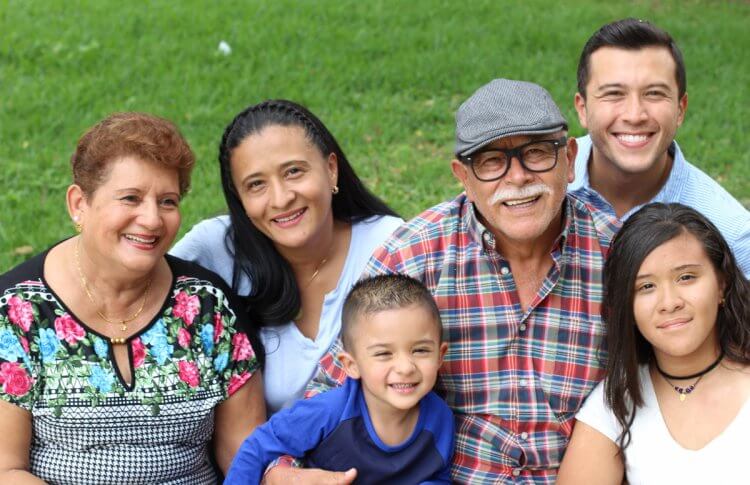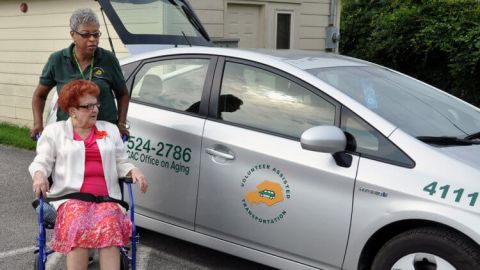Is It Time for Government to Offer Universal Family Care?
Consider the possible hefty caregiving needs and costs over an adult’s lifetime:
– Early child care and education runs nearly $10,000 annually for the parent of a toddler, on average.
– Family caregivers spend roughly $7,000 on caregiving costs, on average, according to AARP.
– The federal law requiring many employers to provide family and medical leave is unpaid leave — and 40% of workers are excluded. So if most workers take a leave to care for a loved one, they face significant wage loss. They might lose their job, too.
– One in two people turning 65 today will need long-term care at some point; of those who’ll have significant long-term care needs, the average cost will be $266,000.
Is it time for the government to offer Americans a Universal Family Care program that would help adults of all ages shoulder caregiving costs? The National Academy of Social Insurance (NASI), a big-ideas nonpartisan nonprofit, thinks so and just published a 297-page report laying out the way this novel, if provocative, idea could work.
“How we view these issues often gets us in trouble. We parse them into separate pieces,” said Marc Cohen, chair of the NASI Long-Term Services and Supports Working Group. “What we did is say: ‘Wait. Care needs really span the lifespan. Is there a way to think about this in a more holistic way?’”
Universal Family Care would provide benefits for child care, paid family and medical leave and long-term care and would be designed and offered by states.
How Universal Family Care Would Work
NASI’s 29 care-policy experts spent a year working on that, resulting in its Universal Family Care idea and report. Universal Family Care would provide benefits for child care, paid family and medical leave and long-term care, and would be designed and offered by states through “social insurance pools,” with funding largely from residents.
Heidi Hartmann, chair of the Early Child Care and Education/Paid Family and Medical Leave Working Group says the social insurance pool idea has one big advantage over today’s fragmented financing system for caregivers: “This is a benefit you will get over your lifetime.”
Why do it through states and not through the U.S. government?
“Each state has unique political dynamics and demographics. Some have older populations. Some have more young families,” said Benjamin Veghte, the study panel director and NASI’s vice president for policy. “We wanted to offer a toolkit to states to pick what works for them.”
And states, the NASI report says, have acted as “laboratories of democracy and social policy.”
Where Universal Family Care Might First Appear
The success of Massachusetts’s health care program under then-Republican Governor Mitt Romney, for instance, became a model for the Affordable Care Act. Washington state just enacted a law creating the first-in-the-nation state long-term care program. Hawaii’s Kupuna Caregivers Program provides family caregivers who work up to 30 hours a week up to $210 a week for to pay for long-term care for a loved one 60 or older living at home. California, New Jersey, New York and Rhode Island have paid family and medical leave laws; a few other states have leave bills awaiting implementation.
The NASI report leaders think states with paid leave or long-term care programs are probably the likeliest to consider adopting universal family care.
Reducing Stress, Boosting Productivity
Veghte says a universal family care system could greatly relieve the stress of working Americans with caregiving needs, make them more financially secure and boost the U.S. economy. Some 68% of working parental and spousal caregivers surveyed by AARP and the National Alliance for Caregiving said their caregiving affected their ability to work; many had to leave early, arrive late or take time off during the day to provide care.
“Think of the productivity gains if people didn’t have to stay home to be a caregiver and could contribute to GDP and accumulate retirement savings,” Veghte said.
Hartmann said a universal care program could also lower the use of nursing homes because the paid leave part would make it easier for people to leave jobs temporarily for urgent elder care needs. She cited a 2017 Syracuse University and University of Iowa paid family leave study that found nursing home utilization in California fell 11% after the state offered paid family leave.
Anne Tumlinson, a 2018 Next Avenue Influencer in Aging and founder of the Daughterhood support groups for family caregivers, worked on the NASI report. She told me she frequently hears from people at their wit’s end after a parent suffers a sudden serious health problem. “The family is frantically trying to figure out: Do I try to get mom eligible for Medicaid? Do I quit my job and move to her? Do I leave her alone?” said Tumlinson. “Your whole life gets turned upside down.”
Who’d Pay for Universal Family Care, and How Much?
Of course, the million-dollar question is what would universal home care cost and who’d pay for it?
The NASI researchers offer two broad alternatives: a contributory system and a comprehensive system.
The contributory system would be funded through a payroll tax (roughly 1.5% of earnings for most workers) and wouldn’t cover people outside the paid labor force or those who retired before the program began. A comprehensive system would be available to all residents and paid for through a payroll tax plus other state taxes or general revenues, as well as premiums for those 65 and older who hadn’t paid in for at least 10 years.
When We Might See Universal Family Care
Don’t expect to see a universal family care program in your state imminently. “It’s a new concept, so it will take a little bit of time,” said Tumlinson. Added Cohen: “It’s going to take a lot of education, frankly.”
And many Americans may not be agreeable to paying more taxes for it. Last November, a Maine long-term care ballot initiative failed for that reason.
But the NASI report authors are optimistic, if only because the need to help caregivers is great. “What brought all these people together [to work on the universal family care report] was a sense that we can make a contribution and potentially move the needle.”
This story is part of our partnership with Next Avenue. Next Avenue is public media’s first and only national journalism service for America’s booming older population. Their daily content delivers vital ideas, context and perspectives on issues that matter most as we age.


